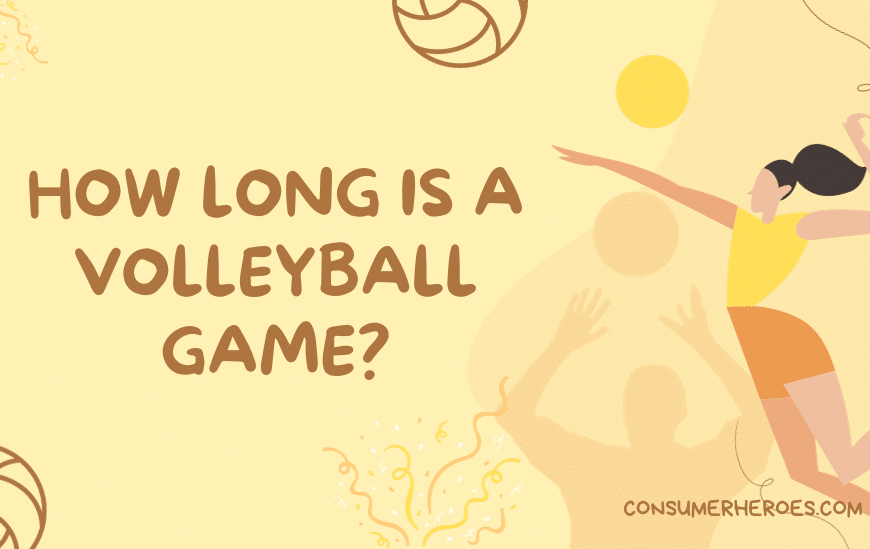Setting a volleyball is a fundamental skill that every player must master. A perfect set can make a difference between a point won or lost. It requires precision, timing, and technique. Setting the ball is an important part of the game, and it is essential to learn how to do it correctly.
To set a volleyball, the player must position themselves under the ball, with their feet shoulder-width apart, and their knees slightly bent. The player must then raise their arms above their head, with their elbows bent and their palms facing upwards. The ball should be hit with the fingertips, and the wrists should snap forward to create a clean and accurate set. It is crucial to make sure that the ball is set to the right height and direction, as this will determine the success of the play.
Mastering the art of setting a volleyball requires practice and patience. It is a skill that can be developed over time, and with the right techniques and guidance, any player can become a great setter. In this article, we will provide you with some tips and tricks to help you improve your setting skills and take your game to the next level.
Understanding Volleyball Basics
Volleyball is a popular sport played by millions of people around the world. It’s a fun and exciting game that requires teamwork, skill, and strategy. Before you can start playing volleyball, it’s important to understand the basics of the game.
Court and Net
The volleyball court is rectangular and divided into two halves by a net. The net is 7 feet 11 5/8 inches high for men and 7 feet 4 1/8 inches high for women. The court is 59 feet long and 29 feet 6 inches wide. Each team has three hits to get the ball over the net and onto the opponent’s side of the court.
Scoring
In volleyball, points are scored when the ball lands on the opponent’s side of the court or when the opponent makes an error. The first team to reach 25 points wins the set, and the first team to win three sets wins the match.
Serving
Serving is how each point begins in volleyball. The server stands behind the end line and serves the ball over the net to the opponent’s side of the court. If the ball lands inbounds, the receiving team must return the ball over the net in three hits or less.
Passing
Passing, also known as bumping, is the act of using your forearms to pass the ball to a teammate. Passing is an essential skill in volleyball, as it’s often the first hit in a team’s offense. Good passing allows for more effective sets and hits.
Setting
Setting is the act of using your fingertips to direct the ball to a teammate for a hit. A good set allows the hitter to approach the ball and hit it with maximum power and accuracy. Setting requires skill and precision, and is often performed by a designated setter on the team.
Hitting
Hitting, also known as spiking, is the act of jumping and hitting the ball over the net with maximum power and accuracy. A good hit is difficult to defend and often results in a point for the hitting team. Hitting requires good timing, technique, and athleticism.
Conclusion
Understanding the basics of volleyball is essential for anyone looking to play the game. By knowing the court and net dimensions, scoring rules, and basic skills like serving, passing, setting, and hitting, players can develop their skills and become more effective on the court.
Mastering the Correct Posture
When setting a volleyball, the correct posture is crucial for accuracy and consistency. A player’s posture affects the trajectory and speed of the ball, so it’s important to get it right. Here are some tips for mastering the correct posture:
- Start with a balanced stance. Stand with your feet shoulder-width apart and your weight evenly distributed.
- Bend your knees slightly. This helps you get lower to the ground and gives you more control over the ball.
- Keep your back straight. Avoid hunching over or leaning too far forward or backward.
- Relax your shoulders. Tension in your shoulders can affect your ability to set the ball accurately.
- Extend your arms straight in front of you. Your elbows should be slightly bent, and your hands should be positioned above your forehead.
- Keep your eyes on the ball. This helps you track the ball’s movement and position yourself correctly.
By mastering the correct posture, you can improve your setting skills and become a more valuable player on the court.
Executing the Volleyball Set
Executing the volleyball set is a crucial skill for any volleyball player, especially for the setter. The set is the second hit in a three-hit sequence and is used to set up an attacker for a hit. Here are a few key points to keep in mind when executing the volleyball set:
- Start with a good pass: A good pass is essential for a good set. The setter needs to be able to get to the ball quickly and accurately, so a good pass is critical. The passer should aim for a spot about two feet in front of the setter and high enough to allow the setter to get under the ball.
- Get into position: The setter needs to get into position quickly after the pass. The setter should move to the ball and get into a good position with their feet shoulder-width apart and their knees slightly bent. The setter should be facing the net and have their hands up and ready to receive the ball.
- Use the correct technique: The setter should use the correct technique when setting the ball. The setter should use their fingertips to push the ball up and out to the attacker. The ball should be released at the top of the setter’s jump and should be set to the attacker’s hitting zone.
- Communicate with the hitter: The setter should communicate with the hitter before the set to let them know where the ball will be set. This will help the hitter prepare for the hit and increase the chances of a successful attack.
- Practice, practice, practice: Like any skill, the volleyball set takes practice to master. Setters should practice their technique, footwork, and communication skills to become more proficient at executing the volleyball set.
By following these tips, players can become better at executing the volleyball set and setting up their teammates for successful attacks.
Hand Positioning and Contact
Hand positioning and contact are crucial when setting a volleyball. The proper hand positioning will help the player to have better control over the ball, and the right contact will ensure that the ball goes where it is intended to go.
The player should start with their hands in a diamond shape, with their fingers spread apart and their thumbs touching each other. The diamond shape should be formed by the tips of the player’s index fingers and thumbs. The player’s wrists should be locked and their elbows should be straight.
When the ball comes to the player, they should make contact with the ball using the pads of their fingers. The player should aim to make contact with the ball at the center of the diamond shape formed by their hands. The player should also try to make contact with the ball at the highest point possible, which will give them more control over the ball.
The player should use their legs and body to move towards the ball, and they should use their arms and hands to set the ball. The player should keep their eyes on the ball at all times, and they should be ready to adjust their hand positioning and contact if needed.
It is important to note that the player should not use their palms to set the ball. Using the palms will result in less control over the ball and may cause the ball to go in the wrong direction.
Overall, the player should focus on having a strong hand positioning and making clean and consistent contact with the ball to set a volleyball accurately.
Footwork for Volleyball Set
Footwork is essential to a successful volleyball set. The right footwork can help a setter get in position to make an accurate and effective set. Here are some tips for proper footwork:
- Start with a good base: A setter should have a shoulder-width stance with his or her feet parallel to each other. This provides a solid foundation for movement.
- Move to the ball: A setter should move towards the ball, not away from it. This means taking small, quick steps to get in position.
- Square up: Once in position, a setter should square up to the net and the hitter. This means facing the target with both feet and shoulders pointed in that direction.
- Use the right foot: The foot closest to the net should be the pivot foot. This foot stays in place while the other foot moves to adjust to the ball.
- Follow through: After making the set, a setter should follow through with his or her hands and feet. This means taking a step towards the target and extending the arms fully.
By following these footwork tips, a setter can improve his or her accuracy and consistency. It takes practice to master these movements, but with time and dedication, anyone can become a skilled volleyball setter.
Improving Your Volleyball Set Skills
Improving your volleyball set skills is essential if you want to be a successful volleyball player. A good set can make all the difference in a game. Here are a few tips to help you improve your volleyball set skills:
1. Practice, Practice, Practice
The key to improving your volleyball set skills is practice. Make sure to practice your sets regularly, focusing on proper technique and form. Work on your footwork, hand positioning, and timing. The more you practice, the more comfortable you will become with the technique, and the better your sets will be.
2. Focus on Your Footwork
Footwork is an essential part of setting in volleyball. Make sure to focus on your footwork, as it will help you get into the right position to make a good set. Keep your feet shoulder-width apart and point them towards your target. Take small steps to adjust your position as needed.
3. Use Your Hands Correctly
Using your hands correctly is crucial when it comes to setting in volleyball. Make sure to keep your hands soft and relaxed, with your fingers spread apart. Use your fingertips to guide the ball, and avoid using your palms or wrists. Keep your elbows bent and close to your body for better control.
4. Communicate with Your Teammates
Communication is key in volleyball, especially when it comes to setting. Make sure to communicate with your teammates, letting them know where you want the ball and when you are ready to receive it. This will help you make better sets and improve your overall game.
By following these tips, you can improve your volleyball set skills and become a better player. Remember to practice regularly, focus on your footwork and hand positioning, and communicate with your teammates. With time and dedication, you will see improvement in your game.
Common Mistakes to Avoid
When setting a volleyball, there are a few common mistakes that players should avoid to ensure a successful play.
Mistake #1: Lack of Communication
One of the most common mistakes is a lack of communication between the setter and the hitter. This can result in a poorly executed set, causing the hitter to miss the ball or hit it out of bounds. To avoid this mistake, players should communicate clearly with each other before the play to ensure they are on the same page.
Mistake #2: Incorrect Hand Position
Another common mistake is incorrect hand position when setting the ball. If the hands are too close together or too far apart, the set may be too low or too high, making it difficult for the hitter to make a successful play. To avoid this mistake, players should practice proper hand positioning and make adjustments as necessary.
Mistake #3: Inconsistent Sets
Inconsistent sets can also be a problem for setters. If the sets are too predictable or vary in height and location, it can make it difficult for the hitter to anticipate where the ball will be and make a successful play. To avoid this mistake, players should work on consistent sets during practice and focus on making adjustments as necessary during the game.
Mistake #4: Poor Timing
Poor timing can also be a problem when setting the ball. If the set is too early or too late, it can make it difficult for the hitter to make a successful play. To avoid this mistake, players should work on their timing during practice and communicate with each other to ensure they are on the same page.
By avoiding these common mistakes, players can improve their setting skills and increase their chances of making successful plays on the court.
Drills for Practice
To improve their setting skills, players need to practice regularly. Here are some drills that coaches can use during practice to help their players develop better setting skills:
1. Wall Setting Drill
This drill is designed to help players improve their hand positioning and accuracy. To perform this drill, players stand facing a wall with their arms extended in front of them. They then set the ball against the wall using proper hand positioning and technique. Players should focus on hitting the same spot on the wall each time and keeping their hands steady.
2. Partner Setting Drill
In this drill, players work with a partner to practice their setting skills. One player tosses the ball to the other player, who then sets it back to them. Players should focus on proper hand positioning and technique, as well as accuracy and consistency.
3. Circle Setting Drill
This drill is designed to help players improve their footwork and positioning. Players stand in a circle with one player in the center. The player in the center sets the ball to each player in the circle, who then sets it back to the center player. Players should focus on moving quickly and efficiently to get into position for each set.
4. Overhead Setting Drill
This drill is designed to help players improve their overhead setting skills. Players stand facing a wall with their arms extended overhead. They then set the ball against the wall using proper hand positioning and technique. Players should focus on hitting the same spot on the wall each time and keeping their hands steady.
5. Three-Person Setting Drill
In this drill, three players work together to practice their setting skills. One player tosses the ball to the second player, who then sets it to the third player. The third player sets the ball back to the first player, and the drill continues in this pattern. Players should focus on proper hand positioning and technique, as well as accuracy and consistency.
By incorporating these drills into their practice sessions, coaches can help their players develop better setting skills and improve their overall performance on the court.
Conclusion
In conclusion, setting a volleyball is a crucial skill that every volleyball player should master. It is an essential part of the game that requires precision, speed, and accuracy. Setting requires a lot of practice, patience, and dedication to improve.
The key to setting is to keep your hands soft and relaxed, and to use your fingers to guide the ball. It’s important to keep your eyes on the ball and your body balanced. Remember to use your legs to generate power and momentum.
When setting, it’s essential to communicate with your teammates, call out the play, and be aware of your surroundings. A good setter is always alert and ready to make split-second decisions.
Overall, setting is a skill that takes time and practice to master. By following the tips and techniques outlined in this article, players can improve their setting skills and become an invaluable asset to their team. With hard work and dedication, anyone can become a great setter and contribute to their team’s success.







